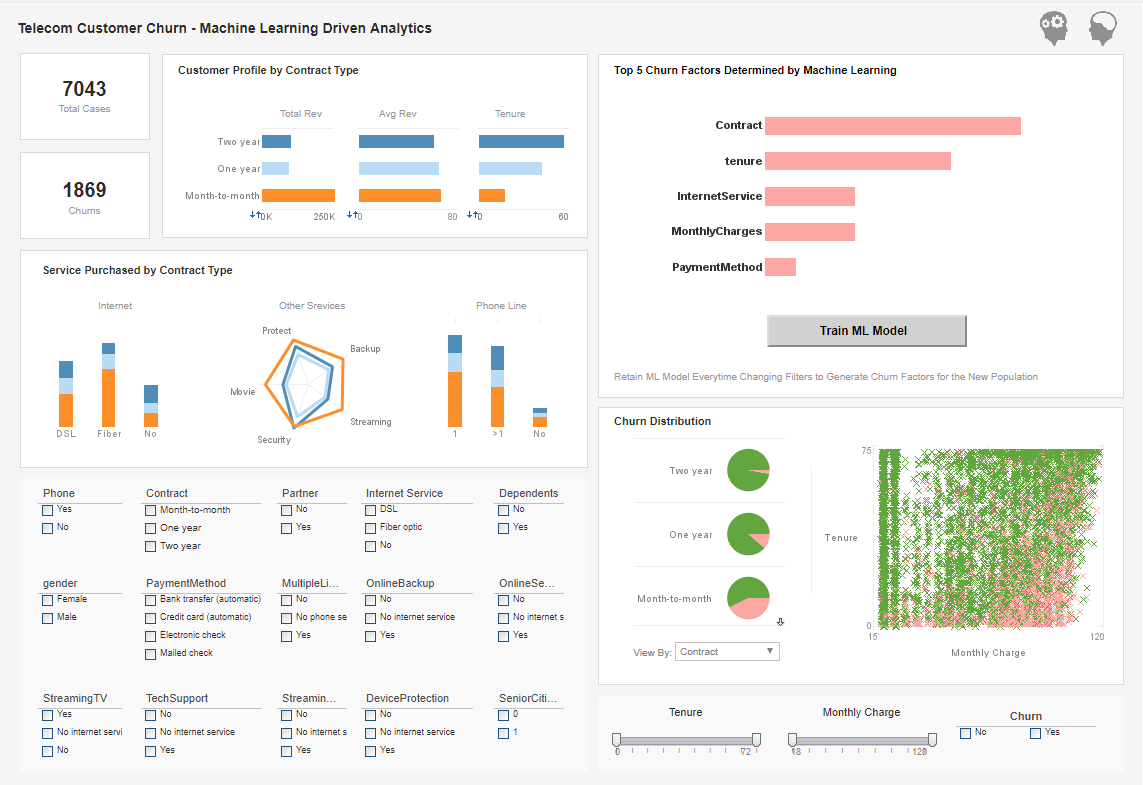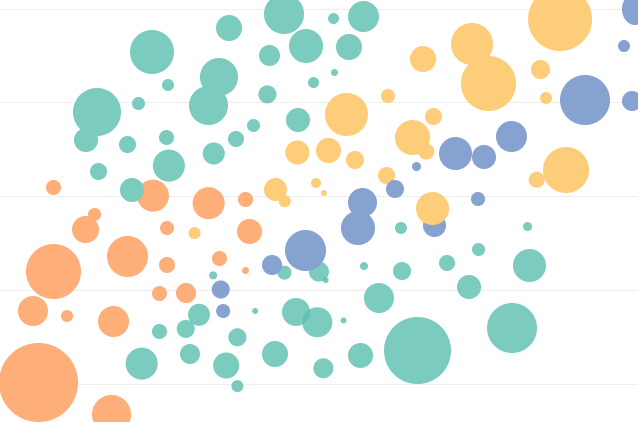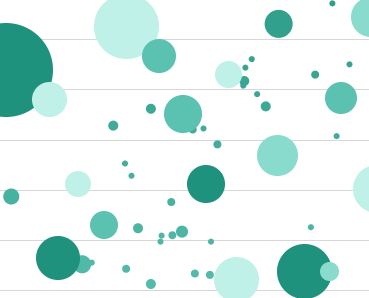Machine Learning Applications
Machine learning applications have the power to transform companies and elevate them to new heights. InetSoft has brought its flagship BI software to the realm of machine learning by providing an integrated visual analytics interface to help end users understand the results of a machine learning model. This makes the running of ML algorithms as easy as clicking a button. Now, non data scientists can harness the power of automated data modeling to find solutions to the business challenges they face.
Automate Insights From Complex Data
2 Types of Machine Learning Algorithms
Supervised Learning
Supervised learning is just that, learning that requires supervision. Algorithms in this category utilize your established variable prediction model and train a ML predictor variable against it to make future calculations.
Unsupervised Learning
Unsupervised learning, unlike supervised learning, asks machine learning to find patterns on its own. In this method, no human provides examples to be used as a base to learn from. For business applications, two types of unsupervised learning are often seen: clustering and churn. Cluster analysis is especially useful for revealing potential segmentation methods which might not have come to mind. This is done by grouping website visitors or customers into clusters. The dashboard image above is an example of churn machine learning created by InetSoft.
Know Before They Go
Customer Churn Rate Prediction
Customer churn rate prediction is an unsupervised machine learning method that quantifies the amount of individuals or items moving away from a collective group over a particular period, and therefore is an aid for determining a company's customer base. Business users have the ability to first label a set of users into the churn classes, and then let the machine learning algorithm study the data set to figure out how to do the same classification automatically.
The bottom line is if you have a set of data with output produced by a human, machine learning can automate the job for you. This can help companies identify at-risk users or clients while there is still time to take action on them.
At the top is a sample dashboard image created by InetSoft, utilizing a churn prediction model, where we demonstrate how you can use ML models to analyze the results of a churn prediction model. We applied this model to existing customers and re-trained it on different customer segments to further improve predictability.
About InetSoft
Since 1996 InetSoft has been delivering easy, agile, and robust business intelligence software that makes it possible for organizations and solution providers of all sizes to deploy or embed full-featured business intelligence solutions. Application highlights include visually-compelling and interactive dashboards that ensure greater end-user adoption plus pixel-perfect report generation, scheduling, and bursting. InetSoft's patent pending Data Block™ technology enables productive reuse of queries and a unique capability for end-user defined data mashup.
This capability combined with efficient information access enabled by InetSoft's visual analysis technologies allows maximum self-service that benefits the average business user, the IT administrator, and the developer. InetSoft was rated #1 in Butler Analytics Business Analytics Yearbook, and InetSoft's BI solutions have been deployed at over 5,000 organizations worldwide, including 25% of Fortune 500 companies, spanning all types of industries.




